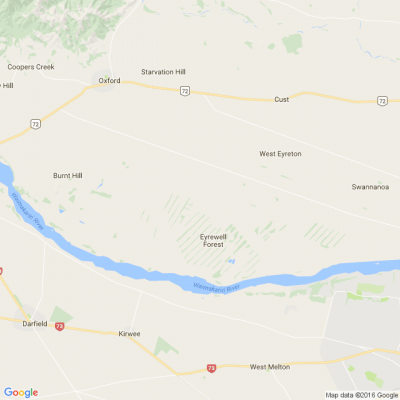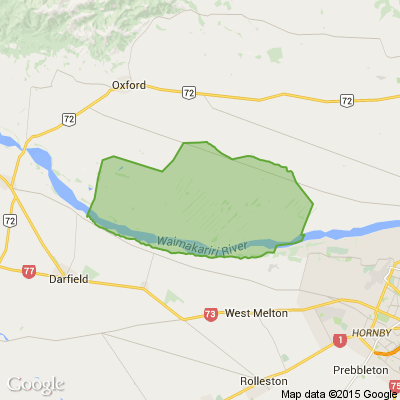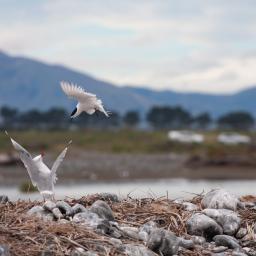The ‘relentless’ native bird preying on other species
By David Hill, Local Democracy Reporter
Conservationists and biodiversity managers have suspected for some time the karoro (southern black-backed gull) was behaving as a predator to other native birds.
Now bird counts in Hurunui and Kaikōura show the karoro is a predator to threatened ground nesting birds for a source of food, Environment Canterbury (ECan) senior biodiversity adviser Heath Melville says.
The karoro are ‘‘a big, beautiful bird’’, but have been monitored attacking nesting colonies until complete failure by destroying eggs and taking young chicks for food.
They are also known to attack newborn lambs and calves, and other vulnerable livestock.
‘‘We can certainly see the black backed gulls are relentless,’’ he said.
‘‘We have been doing some controls, but they are still returning to these sites to breed."
ECan recently completed bird counts at the Waiau Uwha and Hurunui rivers in the Hurunui district, and the Clarence Waiau Toa and Charwell rivers and along the Kaikōura coastline.
This was co-ordinated with bird counts conducted by the Department of Conservation (DOC) and other councils from across the South Island, to learn more about the karora and threatened native species nesting in colonies, primarily in braided riverbeds.
The Waiau Uwha braided river bird surveys have been completed eight times since 2008.
The latest count produced a similar result to previous years, with native bird numbers trending down, while karoro and exotic species were trending upwards.
In all, 45 bird species were identified in the Waiau Uwha survey, including native wrybill, white and black-fronted tern, and banded dotterel.
The birds were also threatened by animals and humans, as well as climate change, habitat loss and weed infestations in riverbeds, leaving birds to nest in areas prone to high river flows.
The Kaikōura sites were added to the bird survey last year, after the Kaikōura Zone Committee agreed to fund a count of the karoro, provided staff engage with mana whenua.
A Te Rūnanga o Kaikōura spokesperson said karoro eggs were traditionally collected as mahinga kai, but there was no need to manage the population prior to colonisation.
The birds have expanded into areas where land use provides increased food sources, particularly braided rivers surrounded by farmland, and near landfills or refuse centres.
The Rūnanga was supportive of taking control measures, provided decisions were based on good data, the spokesperson said.
‘‘The biggest concern for Ngāti Kurī is having a clear understanding of what is going on.
‘‘If the karoro is predating other native species in decline then we need to manage it.
‘‘But what if we have a cull and then we have a disease go through the population, then we have contributed to wiping them out.’’
Kaikōura had the largest red billed gull colonies in New Zealand, while black-billed gulls, shags, terns, oystercatchers and dotterels were also surveyed breeding in the area.
Bird counts were new in Kaikōura, aside from a 52-year study by local resident James Mills of red billed gulls on the Kaikōura Peninsula. This study has shown the red billed gull was in steady decline, despite predator control measures carried out by DOC.
The endangered red billed gulls were often considered a problem to outdoor diners, which has been exacerbated by declining food sources at sea, Melville said.
‘‘They get in people’s faces, take their eggs benny or their fish ’n chips because in many instances they are literally starving, whereas the karoro don’t tend to get so close, and are better adapted at foraging a more diverse diet in highly modified environments.’’
Melville said council staff will continue engaging with the Rūnanga, DOC, LINZ, Clarence River Rafting (which have been assisting in surveying nesting sites), researchers, and other councils and biodiversity managers to monitor the population and develop strategies to manage bird populations.
The karoro are proving to be a pest in other parts of the South Island.
In Geraldine, DOC biodiversity senior ranger Ian Fraser said his office has been working to control karoro on local rivers over the last eight years.
‘‘We have been talking with [Te Rūnanga o] Arowhenua and they have been working with Environment Canterbury, identifying the potential of karoro eggs as mahinga kai and the Rūnanga has carried out some control work as well.’’
Fraser said land use changes over the last 1000 years had favoured karoro over other native birds.
The clearing of forests have created open plains, while today’s farms offered plenty of food sources - ‘‘not to mention our waste facilities’’.
‘‘We have altered the balance, so we need to try to meddle in good ways.’’
■ LDR is local body journalism co-funded by RNZ and NZ On Air.
It’s Riddle Time – You Might Need an Extra Cup of Coffee!
Nobody has ever walked this way. Which way is it?
Do you think you know the answer to our daily riddle? Don't spoil it for your neighbours! Simply 'Like' this post and we'll post the answer in the comments below at 2pm.
Want to stop seeing riddles in your newsfeed?
Head here and hover on the Following button on the top right of the page (and it will show Unfollow) and then click it. If it is giving you the option to Follow, then you've successfully unfollowed the Riddles page.

Poll: Do you think NZ should ban social media for youth?
The Australian Prime Minister has expressed plans to ban social media use for children.
This would make it illegal for under 16-year-olds to have accounts on platforms including TikTok, Instagram, Facebook and X.
Social media platforms would be tasked with ensuring children have no access (under-age children and their parents wouldn’t be penalised for breaching the age limit)
.
Do you think NZ should follow suit? Vote in our poll and share your thoughts below.

-
84.7% Yes
-
13.9% No
-
1.4% Other - I'll share below
Heritage gem or dangerous burden? Bowling club’s dilemma with historic pavilion
By David Hill, Local Democracy Reporter
A Rangiora sports club is frustrated with the increasing maintenance and insurance costs of its 113-year-old pavilion, which can't be demolished due to its historic importance.
The Rangiora Bowling Club approached the Waimakariri District Council last year for help, but was yet to find a satisfactory solution for the pavilion.
It is registered with Heritage New Zealand and listed in the Waimakariri District Plan, leaving the club with few options.
The club’s ex-president Norman Hewett said the pavilion on Good St, north of the town centre, is unsafe and no longer fit for purpose.
Hewett said the council has been supportive and Heritage New Zealand has offered advice, but no funding.
‘‘Everybody thinks the building is worth preserving, but there is a cost and it shouldn’t be put on the bowling club.
‘‘As far as we are concerned it is not fit for purpose and we want to know how we can get round that.
‘‘We want to know what the community thinks and if they want to retain it, are they willing to pay for it?’’
The club has formed a sub-committee to explore what options are available.
Sub-committee member Rodger Wilton said the club has been unable to find any record that the club had a say when the building was given heritage status.
Built in 1911, the pavilion served the Rangiora Bowling, Tennis and Croquet Club, which originally shared the site.
It cost 945 pounds and was opened on October 28, 1911.
The three clubs purchased 1.25 acres on the corner of Blackett and Good streets in April 1905, but later parted company, with tennis and croquet moving to new sites.
While no quotes have been sought, Hewett believed it would cost more than $1 million to bring the pavilion up to code.
Ideally the club would like to demolish the pavilion so it can upgrade its main building and remain on site.
The stairwell was non-compliant and there was no wheelchair access, meaning the club was unable to use the upstairs facilities.
There are loose tiles on the roof which need replacing.
An attached building behind the pavilion is sufficient to meet the needs of the 140 members and for hosting the largest bowls tournament in North Canterbury, Hewett said.
He said the club is open to all options, including a land swap or selling to a developer with the expertise to restore the pavilion.
Waimakariri District Council community and recreation manager Chris Brown said the council is working through various opportunities with the bowling club as part of a feasibility study.
‘‘There are a lot of options to consider. Each have various financial, social and operational implications.’’
Heritage New Zealand Pouhere Taonga said it had ‘‘expressed support for the adaptive reuse of the building and supported the club’s intention to investigate options for the pavilion and the associated land parcel’’.
The Rangiora Bowling Club is keen to hear the views of the community. Email rangiorabowling@gmail.com.
■ LDR is local body journalism co-funded by RNZ and NZ On Air.











 Loading…
Loading…
























